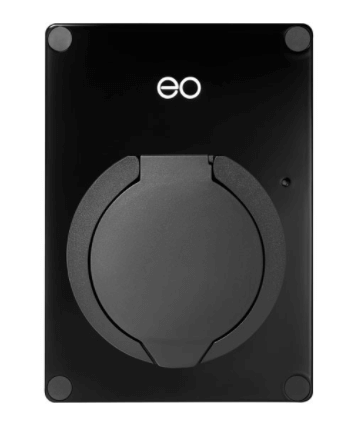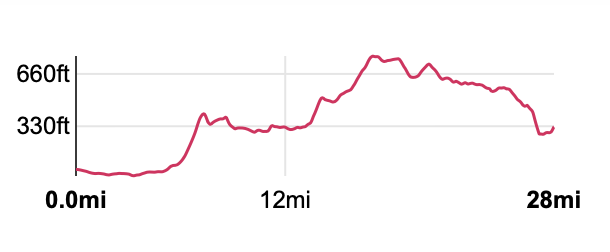The Arcane World of EV Journey Estimation
ABRP Plan - Land’s End to John O’Groats
When the EV curious ask me “What’s the main difference with doing longer journeys in an EV?” I answer “Planning”. What’s constitutes a longer journey? I think the best definition is any journey that means that your vehicle cannot make it there and back without charging at least once before you get home again. Shorter than that, and a plan is not really required. So what’s so different about it compared to an internal combustion engine (ICE) vehicle?
Typically an ICE vehicle will have a range double that of a similar EV. So the number of times a journey will fall into the “long” category will be far fewer. I believe though that the real difference is the completely different mentality between fueling an EV and an ICE vehicle. At least there is for me.
My Knaus camper van is a diesel with a big 20-gallon tank. It averages about 30MPG - so a range of 600 miles. Bear in mind that the mainland UK is only about 600 miles long; so it’s a challenge to do more than that without leaving the country. In the UK, fuel is currently about £6.75 per gallon at a supermarket and up to £8 at a motorway service station. It will take me the same time to fill up regardless of price. So before a journey, I would take a trip to the supermarket to minimise costs. It’s worth the effort to save £27, even if the bill is still a painful £135 from empty. If I can combine that with a shop it’s not too much of a problem, but a special trip just to fuel up would take me about half an hour. This tends to get forgotten in comparisons.
I have always hated refuelling, especially with diesel. Normally, I’d leave it as long as possible. However, I have to balance that urge to go deep with fuel costs and availability. Yes, range anxiety is a thing with diesel. Britain has lost over half of its petrol stations since 1990. What’s left is supermarkets and larger petrol stations that normally have a convenience store. An industry insider once told me the fuel was there to attract people to the store more than the other way round. I wonder how robust the fossil fuel infrastructure will be as the balance starts to shift to electric. As a result of this decline, in more rural areas, petrol stations are getting increasingly sparse. I would not risk running low in those rural areas and that’s where the campsites tend to be. In summary, break stops are based on the needs of the humans, not the vehicle when in an ICE. Refuelling the car is a separate activity largely driven by cost.
With my EV, I would need to recharge at least two times to match the Knaus. My cheapest source of energy is at home, so I would want to start at 100%. A full “tank” of homebrew electrons costs me £4.20. Next comes the planning. I need to do this if I want to optimise time efficiency. The car can go for about 4 hours but the humans probably need a break every 2. You want to minimise any dead time where you are sitting there in the car willing the state of charge (SoC) to rise faster. This means topping up the car with electricity whilst the passengers are replenishing their caffeine levels. In my I-PACE, I would expect to replenish the battery by about 30kW in a half-hour stop and for that to cost me £12. That’s a bit less than the 40kW used but close enough. The planning is required to find chargers in the right area with the right speed. Overall, I would expect the total charging cost to be about £70 for 600 miles.
Journey profile to my parents
Planning EV journeys is complicated by all the factors that govern range and charging. Cold weather reduces range and can slow charging too. Driving speed has a big impact on range, increasing the faster you go. I use 6% more energy going to my parent’s house than I do coming home just because they live 330ft higher than I do. Rain can increase consumption too. If you have the car fully laden, that is going to take another nibble at your range. EV’s don’t charge in a linear fashion, they slow down as they get fuller. This means that recharging to 100% may not be the quickest option. Stopping more often but leaving with 80% where the charge curve starts to take a steeper decline. The truth is, most of these factors have an impact on ICE vehicle range too. We just don’t think about it because we are not planning our stops with such precision, in fact, we’re probably aren’t planning them at all.
Charging Curve for I-PACE ©Fastned
There are many apps out there to show you where the chargers are and their stats. In the UK two of the leading ones are Zap-Map and Plugshare. To avoid all the hard maths involved in trying to account for all the variables, I would recommend using A Better Routeplanner (ABRP) for pre-planning your journeys. I prefer Apple Maps or Jag’s own sat-nav when it comes to navigation though. Some cars precondition the battery ready for optimal charging if you have your charging destination set in its Navigation. It’s best to know if your car does this before you chose an external nav system.
Using ABRP, I planned a journey from Land’s End to John O’Groats - the most southerly and northerly points on the mainland. ABRP plotted a route that was 843 miles and would take 20h15m. Of that, 4h7m was spent charging. That sounds a lot, doesn’t it? The Knaus would only spend 15m “recharging”. In reality, no one does that trip in one go unless it’s for some kind of challenge or charity event. A commercial driver wouldn’t even be allowed to. So most people would stay overnight somewhere. An EV driver would choose a hotel with a destination charger so they could be back at 100% for Day 2. With breaks every 2 hours in the Knaus, it would add a couple of hours to the driving time each day.
So that’s the crux of the difference between ICE and EV journey times. In the real world, they need not be so very different. However, to achieve this, the EV driver must have a good plan. If the journey plan gets derailed (broken chargers, charger queues etc.) that’s when the disparities grow. In compensation, there can be a significant difference in cost in the EVs favour.



